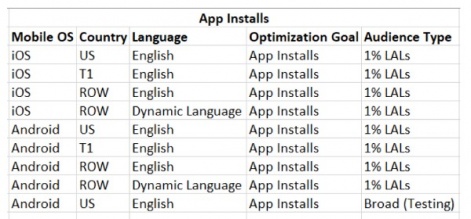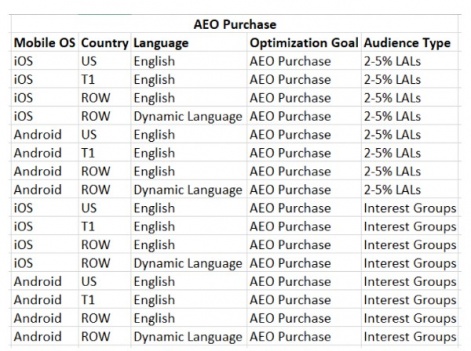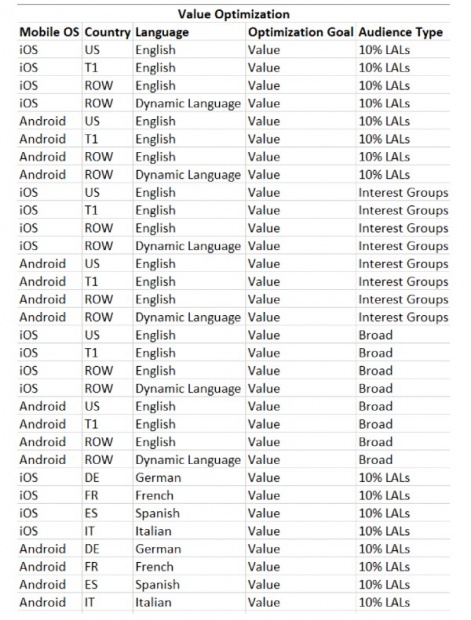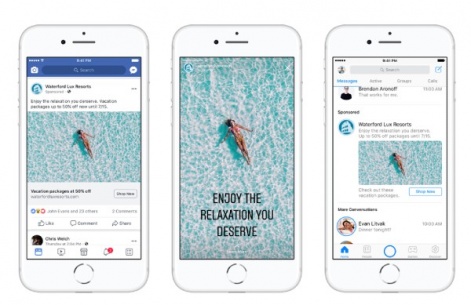Campaign setup matters. A lot. We need to figure out which campaign structure is going to work best for the particular app we’re launching.
That usually means using Campaign Budget Optimization settings, but we also have to decide if we want to initially optimize for Mobile App Installs (MAI) or App Event Optimization (AEO).
Typically, if we don’t already have a large database of similar payers, we will need to start with a limited launch using (MAIL) app installs as our campaign optimization objective until we’ve got enough data to shift to AEO (app event optimization).
For initial testing, we like to buy 10,000 installs to allow for testing of game dynamics, KPIs and creative.
Once we have 2-3 rounds of initial testing and data complete, we recommend switching UA strategies to focus on purchases using AEO and eventually VO to drive higher value users.
This one-two punch of AEO and then VO is a great solution that allows ROAS to start to flow through the system for LTV modeling and tuning. Ultimately, what we’re doing is training Facebook’s algorithm for maximum efficiency and testing monetization and game dynamic assumptions.
Audience demographics get a lot of attention at this phase, too. We’ll review the performance of our campaigns at various age and gender thresholds, first using broad audience selections to build up a pool for evaluation and eventually allowing Facebook to focus on AEO/VO audiences to test monetization.
Facebook’s recommendation is to start as broad as possible and run without targeting, and we agree with this.
Also keep your account structure simple by using one or two campaigns and minimal ad sets where you reduce or eliminate audience overlap and set your budgets to allow for 50 conversions per week per ad set.
Facebook refers to this as “Structure for Scale” and it gives their algorithm the best opportunity to learn and adapt to the audience you’re seeking. It will help get your ads out of the Learning Phase and into the optimized mode as quickly as possible.
Testing and optimizing creative
We believe creative is still the best competitive advantage available to advertisers.Because of that, we relentlessly test creative until we find break-out ads.
Historically, this focus on creative has delivered most of the performance improvements we’ve made. But we’ve also found that new creative concepts have about a 5% chance of being successful.
So we usually develop and test at least twenty new and unique creative concepts before we uncover a winning concept.
That’s far more work than most advertisers put in, so to stay efficient we’ve developed a methodology for testing creative that we call Quantitative Creative Testing. QCT, combined with some creative best practices, allows us to develop the new high-performance creative concepts that clients need to dramatically improve their return on ad spend (ROAS) and to sustain profitability over time.
Our overarching goal with all this pre-launch creative is to stockpile a variety of winning creative concepts (videos, text, and headlines) so we’re ready for the worldwide launch and can launch in the US and other Tier 1 countries with optimized creatives, audiences, and a fine-tuned Facebook algorithm.
Collect lifetime value data
This is where optimizing the game’s monetization comes in.
While we’re working on campaign structure, what to optimize for, and developing creative, we’re also collecting lifetime value data.This helps us meet the client’s early ROAS targets based on their payback objectives.
Most mature gaming companies want a payback window of one to three years, which is pretty easy to attain if all the other aspects of a campaign are on track.
Low expectations for pre-launch
Post-launch metrics tend to be noticeably stronger than pre-launch metrics. Several factors contribute to this:
- The same creative we tested at pre-launch will usually perform better when it’s used for the worldwide launch.
- The US audience we had held back from advertising to for pre-launch will ultimately make up about 40% of total ad spend once the worldwide rollout is underway. This gives us a lot of potential user base to go after in the most cost-effective ways.
- We tend to see a correlation between higher reach and higher ROAS on Facebook. So the worldwide targeting we use post-launch also gets a boost in performance over the limited market targeting we did pre-launch.
Shifting Towards the Worldwide Launch
Pre-launch campaigns can run from anywhere between a week to a month. They are an investment, but they let us hit the ground running with proven creative, an efficient campaign structure, and a monetization strategy that further boosts profitability.
For advertisers who want to scale fast, this is absolutely the way to go.
Read Part Two of the series here
















